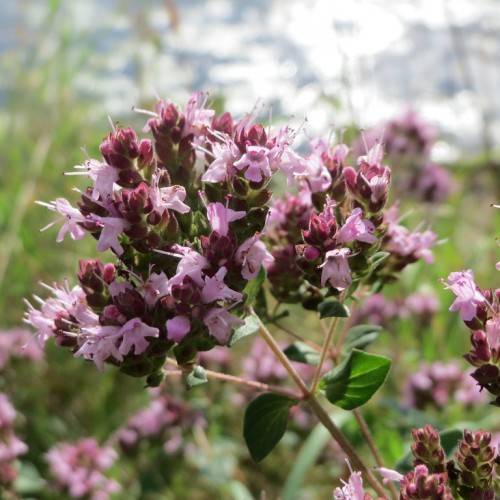
marjoram
Origanum 'Rosenkuppel'
Cycle:
Herbaceous Perennial
Watering:
Minimum
Hardiness Zone:
5 - 8
Flowers:
Flowers
Sun:
Full sun
Leaf:
Yes
Growth Rate:
Low
Maintenance:
Low
Drought Tolerant:
Yes
Salt Tolerant:
Yes
Care Level:
Medium
watering
Marjoram (Origanum 'Rosenkuppel') should be given moderate water, allowing the top 25-50 mm (1-2 inches) of soil to dry out slightly before watering again. Avoid overwatering, which can cause root rot in this plant species. Water 2-3 times per week in warmer months and 1-2 times per week in cooler months. This plant species enjoys a slightly moist environment, so provide additional misting if the humidity is low.
sunlight
Marjoram (Origanum 'Rosenkuppel') does best with full sun and at least 6 to 8 hours of direct sunlight each day. In areas with hot summers, it is advisable to provide some afternoon shade, particularly if plants are young. For optimum growth, it may even benefit from some morning shade on particularly hot days. Low light conditions can cause the plant to become leggy, so make sure to provide the bright light needed. In the winter, Marjoram should not need any artificial light.
pruning
Marjoram (Origanum 'Rosenkuppel') should be pruned regularly throughout the year, preferably in late spring or early summer. Pruning should focus on removing dead growth and ensuring that the plant is well-shaped and vigorous. Regular pruning helps to prevent overcrowding and encourages new growth. Begin pruning by first removing any dead or dying leaves, twigs, stems, and flowers. Next, using hand pruners or shears, trim the top of the marjoram plant by up to 1-third of its overall height. This will encourage side-branching and a bushier appearance to the plant. In the summer months, pinch back newly formed shoots to shape the plant and control the size. Finally, in the fall, cut back the previous season's growth by up to 1-half of its height. This will help prevent the plant from becoming too tall and leggy.
